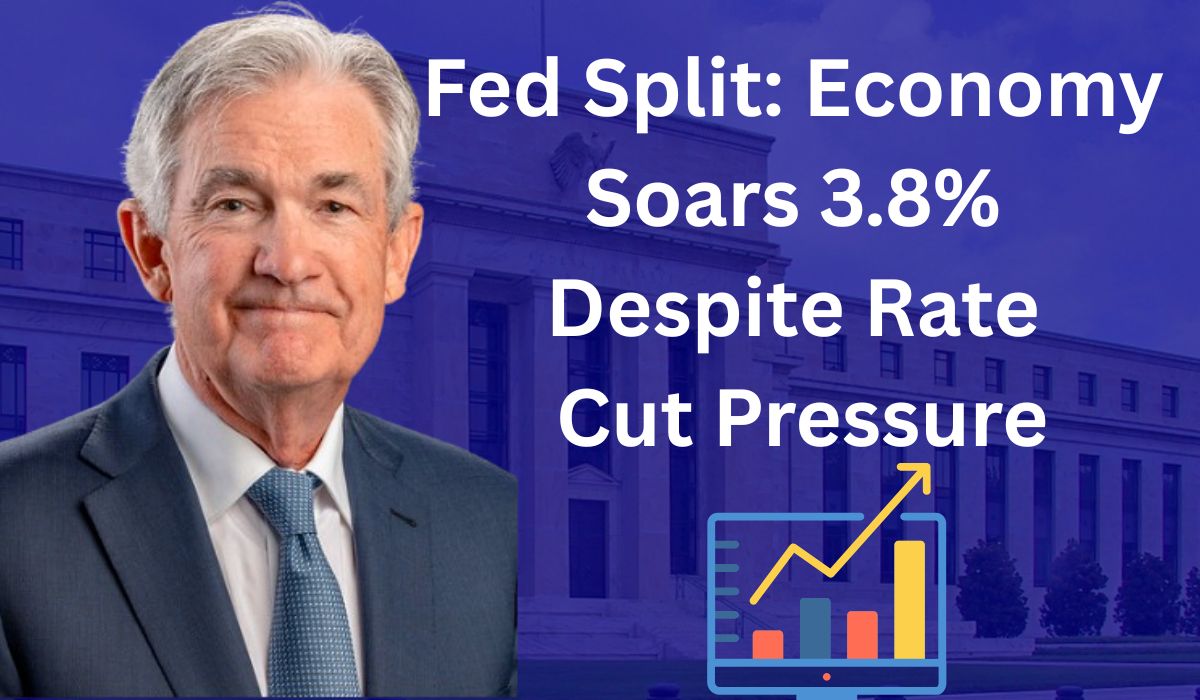The latest economic data just delivered a fascinating contradiction that’s reshaping the Federal Reserve‘s rate outlook. While market expectations have been building for aggressive rate cuts, the numbers tell a completely different story about where this economy actually stands.
GDP Growth Accelerates to Nearly Two-Year High
The US economy expanded at a robust 3.8% pace, revised up from the initial 3.3% reading. This represents the fastest growth rate in nearly two years, driven primarily by strong consumer spending patterns. What caught my attention here is the resilience of consumer demand despite ongoing concerns about economic headwinds.
Business investment also contributed significantly to this growth acceleration. Durable goods orders jumped 2.9%, though the composition reveals interesting sector dynamics. While airplane orders drove much of the increase, computer and semiconductor orders actually declined during the period – particularly relevant given ongoing discussions about tech sector performance and companies like Intel facing challenges.
Labor Market Shows Continued Stability
Jobless claims dropped to 218,000, reinforcing what Fed officials have been describing as a pattern of “low hiring but low firing.” This labor market dynamic suggests employers aren’t aggressively cutting workers, but they’re also not expanding their workforce rapidly. The data points to a cooling but stable employment environment rather than the deterioration some analysts had anticipated.
Fed Officials Signal Growing Division on Rate Policy
Fed Governor Stephen Miran‘s recent Bloomberg remarks reveal a more dovish stance than many of his colleagues. In public statements, Miran expressed his view that “the neutral rate is drifting down” and warned that keeping “policy stays excessively restrictive” poses “greater risks to the downside for the economy.”
However, Miran appears increasingly isolated in this perspective. Fellow Fed officials are taking notably different positions based on the same data:
Austan Goolsbee indicated uncertainty about frontloading rate cuts given current economic conditions. More significantly, Jeff Schmitt, considered among the most hawkish Fed governors, stated in his latest speech that inflation remains too high while viewing current policy as “only slightly restrictive” – positioning he considers appropriate for current conditions.
Trade Data Reveals Tariff Impact Dynamics
The trade balance expanded to $85.5 billion, largely reflecting import behavior around tariff expectations. Imports fell over 4% in July after significant increases as businesses and consumers pulled forward purchases ahead of potential trade policy changes. This pattern demonstrates how trade policy uncertainty creates economic volatility even before actual implementation.
Market Implications and Fed Path Forward
This data creates a challenging environment for Fed policymakers. The Trump administration‘s preference for significant rate cuts faces headwinds from economic performance that suggests less urgent need for monetary accommodation.
The evidence points to an economy that’s growing robustly with stable employment conditions. Consumer spending continues supporting growth while business investment shows selective strength. These conditions typically argue against aggressive rate cuts that markets have been pricing in.
What stands out in these developments is the growing divergence between market expectations and Fed official sentiment. While Governor Miran advocates for policy adjustment, the broader Fed consensus appears increasingly comfortable with current restrictive policy levels.
The pattern suggests the Fed may adopt a more measured approach to rate cuts than markets currently expect. With GDP growth accelerating and jobless claims declining, policymakers have less pressure to move aggressively on monetary accommodation.
For investors, this creates an environment where Fed policy may prove less accommodative than anticipated, particularly if economic data continues showing resilience. The key factor to monitor will be whether this growth momentum sustains through upcoming quarters, as that could further influence the Fed’s policy timeline.
